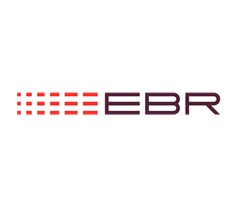 EBR Systems has received US Food and Drug Administration (FDA) approval of the WiSE system—marking what the company describes as a significant leap forward in the treatment of heart failure.
EBR Systems has received US Food and Drug Administration (FDA) approval of the WiSE system—marking what the company describes as a significant leap forward in the treatment of heart failure.
Unlike conventional cardiac resynchronisation therapy (CRT), the WiSE system is the “first and only” to deliver leadless left ventricular endocardial pacing (LVEP) that closely aligns with the heart’s natural conduction pathway.
According to EBR Systems, the endocardial approach represents a more physiological method of resynchronisation and allows electrophysiologists to treat patients who are not able to receive lead-based devices. This advancement offers a pioneering treatment option for patients who have limited access to conventional CRT, the company adds.
“Recent years have brought significant advancements in leadless pacing for the right heart, but CRT patients were limited to traditional options—until now,” said principal investigator Niraj Varma (Cleveland Clinic, Cleveland, USA). “Now, the WiSE system brings a leadless solution to left ventricular pacing, eliminating the biggest limitation of conventional CRT: the lead. This is a gamechanger for patients who were previously untreatable due to anatomy or lead failures.”
EBR Systems claims that the WiSE system allows physicians to help a number of key patient populations:
- Patients with challenging anatomy where the LV lead could not be implanted
- Patients with acute or chronic LV lead failure
- Patients with high procedural risk for LV lead placement
- Patients with leadless pacemakers who need CRT yet are often poor candidates for conventional upgrades
The company’s release goes on to note that the SOLVE-CRT trial has delivered promising results for heart failure patients, and that the WiSE system offers hope to those who have tried other therapies without success and were told no further options existed. Key findings from SOLVE-CRT include a 16.4% reduction in LV end-systolic volume (LVESV)—a key marker of reverse remodelling (p=0.003)—shorter QRS durations by an average of 39 milliseconds. The study also found that more than 55% of cases improved at least one NYHA class and another 40% remained stable.
The WiSE system synchronises with existing pacing devices—pacemakers, implantable cardioverter-defibrillators (ICDs) or CRTs—using a subcutaneous ultrasound transmitter to power an ultra-compact electrode implanted in the LV.
“We’re delighted for the heart failure patients who were not treatable with existing CRT lead-based devices,” said John McCutcheon, president and chief executive officer (CEO) of EBR Systems. “This milestone celebrates the dedication of our team, the support of our shareholders, and empowers electrophysiologists with a vital new tool to help their patients. It marks the culmination of EBR’s 22-year precommercial phase and the start of our journey as a high-growth medical device company.”








